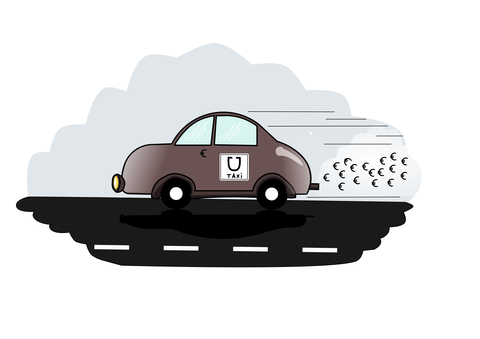 The U.S. Census Bureau reported several years ago that self-employed and microbusinesses (no more than 9 employees) made up over 78% of small businesses, and that self-employed individuals were the fastest growing business group in the U.S. One of the key reasons for this growth is the relatively new on-demand economy of workers for Uber, Lyft, TaskRabbit, and Etsy.
The U.S. Census Bureau reported several years ago that self-employed and microbusinesses (no more than 9 employees) made up over 78% of small businesses, and that self-employed individuals were the fastest growing business group in the U.S. One of the key reasons for this growth is the relatively new on-demand economy of workers for Uber, Lyft, TaskRabbit, and Etsy.
A new report entitled Shortchanged: The Tax Compliance Challenges of Small Business Operators Driving the On-Demand Economy by Caroline Bruckner, Managing Director of the Kogod Tax Policy Center at American University, had some startling findings about on-demand activities and those in them when it comes to taxes and earnings:
- 69% did not receive any tax guidance from the companies they worked for
- 74% earned only $1,000 to $5,000
- 53% also worked a full-time job, a nearly full-time job, or another on-demand activity
It can be deduced from these findings that many of those working in an on-demand activity don’t perceive themselves as being in business. As a result, they don’t necessarily understand obligations for self-employment tax, estimated tax, recordkeeping, and other business-related responsibilities.
I saw this coming a couple of years ago when I wrote J.K. Lasser’s Guide to Self-Employment. The book covered taxes, strategies, and other money-saving tips for Schedule C filers (which includes most on-demand workers). There had been estimates that the number of self-employed workers could grow within the next several years to 40% of all workers because of on-demand activities, freelancers, and various entrepreneurs.
While most businesses (90%), including on-demand workers, use tax professionals or software to prepare their tax returns, in my view it’s still up to such individuals to have a good understanding about taxes so they can:
- Take full advantage of tax breaks to which they may be entitled, and understand what needs to be done to nail down these breaks
- Comply with tax rules in order to avoid penalties, such as paying sufficient quarterly estimated taxes to fall within underpayment penalty exceptions
- Understand the tax implications of business decisions, such as buying versus renting equipment
What’s in store for the on-demand economy and taxes going forward? Here are some thoughts:
- Lawsuits by on-demand workers claiming employee status likely will continue. This past April Uber settled two class action lawsuits from drivers in California and Massachusetts that will allow them to remain independent contractors for now. Under the settlement, drivers received a payment (and another one if Uber goes public) as well as more disclosure from Uber about policies.
- The IRS will continue to argue vigorously for employee status of some workers. The reason: It’s easier to collect Social Security and Medicare taxes from employers than self-employment tax from independent contractors.
And who knows what else? Dramatic changes in tax rules under a new administration could revamp the way independent contractors are treated. Changes in technology could trigger entirely new business models that supersede the on-demand economy. As Shakespeare said, “we know what we are, but not what we may be.” Can you say “robot”?


